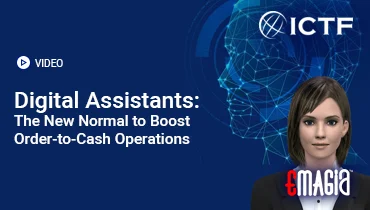Introduction to Enterprise Resource Planning ERP
Enterprise Resource Planning (ERP) is a category of software that unifies essential business operations—such as finance, human resources, supply chain, manufacturing, and customer relations—into one cohesive system. It enables real-time data sharing and operational consistency across departments by acting as a central hub.
The Evolution of ERP: From MRP to Modern ERP Systems
ERP has its roots in the 1960s, beginning with the introduction of Material Requirements Planning (MRP) systems. This system was enhanced into MRP II in the 1980s, introducing more manufacturing-focused capabilities. By the 1990s, ERP platforms had grown into comprehensive systems integrating all major business functions. Today, ERP continues to evolve with innovations like cloud computing, artificial intelligence, and mobile accessibility.
Core Modules in ERP Enterprise Resource Planning
ERP systems are generally composed of several foundational modules, including:
- Finance and Accounting: Handles the general ledger, billing, budgeting, and financial reporting.
- Human Resources: Manages employee records, payroll, hiring processes, and performance tracking.
- Supply Chain Management: Oversees procurement, inventory, shipping logistics, and vendor relations.
- Manufacturing: Supports production scheduling, quality assurance, and facility maintenance.
- Customer Relationship Management (CRM): Focuses on sales pipelines, client interactions, and marketing initiatives.
Benefits of Enterprise Resource Planning ERP Software
Implementing ERP software brings numerous advantages to organizations:
- Improved decision-making through real-time data access.
- Streamlined business operations and reduced redundancies.
- Enhanced compliance and reporting capabilities.
- Better collaboration and transparency across departments.
- Scalability to support business growth.
Deployment Models of ERP Systems
Organizations can choose from various ERP deployment models based on their needs:
- On-Premise ERP: Deployed and managed within a company’s own on-site servers and IT environment.
- Cloud-Based ERP: Delivered over the internet, allowing remote access and lower initial investment.
- Hybrid ERP: Combines aspects of both on-site and cloud ERP to provide greater deployment flexibility.
Implementation Strategies for ERP Enterprise Resource Planning
Deploying an ERP solution requires a structured approach to ensure success:
- Define clear goals and scope of implementation.
- Choose a solution and vendor aligned with your business goals and scalability needs.
- Assemble a dedicated project team.
- Conduct thorough data migration and testing.
- Invest in employee training and manage organizational change to encourage adoption.
Challenges in ERP Implementation
Organizations often encounter a range of obstacles when rolling out ERP systems, such as:
- High initial costs and resource investment.
- Resistance to change from employees.
- Complex data migration from legacy systems.
- Long implementation timelines.
- Integration issues with existing systems.
Examples of Enterprise Resource Planning ERP Systems
Here are some widely used ERP systems across industries:
- SAP ERP: Known for its adaptability and suitability for large, complex enterprises.
- Oracle ERP Cloud: Provides powerful analytics and scalable cloud services.
- Microsoft Dynamics 365: Effortlessly works in harmony with the full suite of Microsoft products and services.
- NetSuite ERP: A flexible, cloud-native option ideal for growing mid-sized companies.
- Infor ERP: Offers niche-specific functionality and robust performance tracking.
The Future of ERP: Trends and Innovations
The ERP landscape continues to transform with innovations such as:
- Uses of Artificial Intelligence and Machine Learning to enhance forecasting and automate decisions.
- Incorporation of Internet of Things (IoT) for real-time, sensor-driven insights and automation.
- Blockchain for secure and transparent transactions.
- Mobile ERP access and user-friendly interfaces.
- Low-code platforms for faster customization and deployment.
Why Choose Emagia for Your ERP Digital Transformation
Emagia offers cutting-edge solutions in the ERP ecosystem, focusing on AI-powered automation for finance operations. With Emagia, organizations benefit from:
- Features such as intelligent automation and predictive analytics to improve cash flow and financial efficiency.
- Streamlined accounts receivable and credit management systems.
- AI-driven insights to support faster, smarter decision-making.
- Integrated digital assistants and predictive analytics.
- Support for global enterprises with multi-currency and multi-language capabilities.
FAQs
What is Enterprise Resource Planning (ERP)?
ERP software consolidates critical business functions—like accounting, HR, and logistics—into one system to enhance productivity and transparency.
What are the main features of ERP systems?
Notable capabilities include process automation, data-driven insights, centralized record-keeping, comprehensive reporting, and seamless departmental coordination.
What are examples of ERP systems?
Examples include SAP ERP, Oracle ERP Cloud, Microsoft Dynamics 365, NetSuite, and Infor ERP.
What are the benefits of ERP software?
With ERP, businesses can streamline tasks, minimize data errors, and scale operations more effectively and efficiently.
How long does ERP implementation take?
Depending on the scope and size of the organization, ERP implementation can take anywhere from a few months to over a year.



